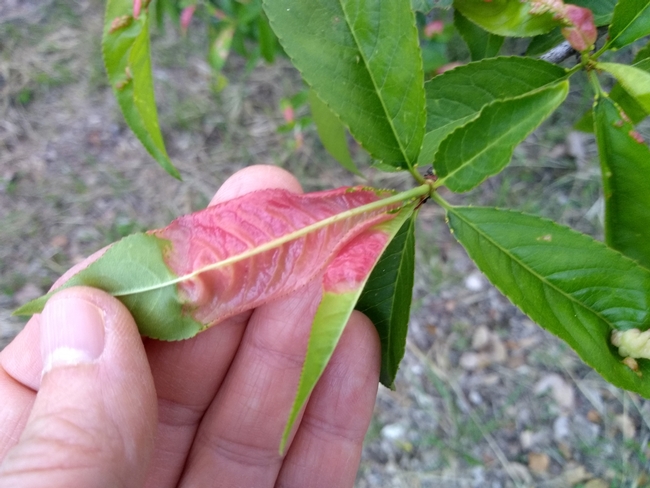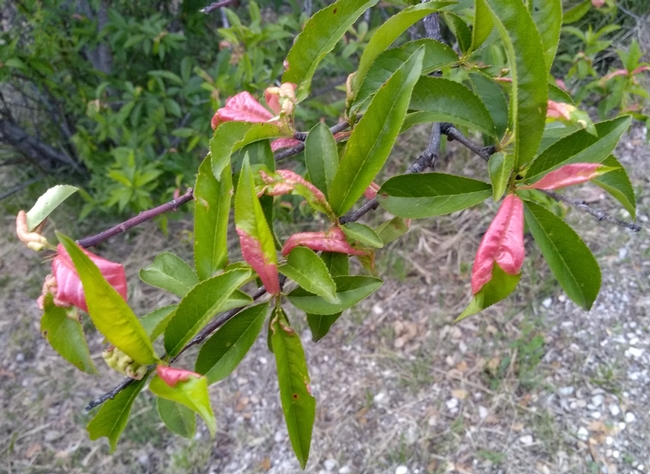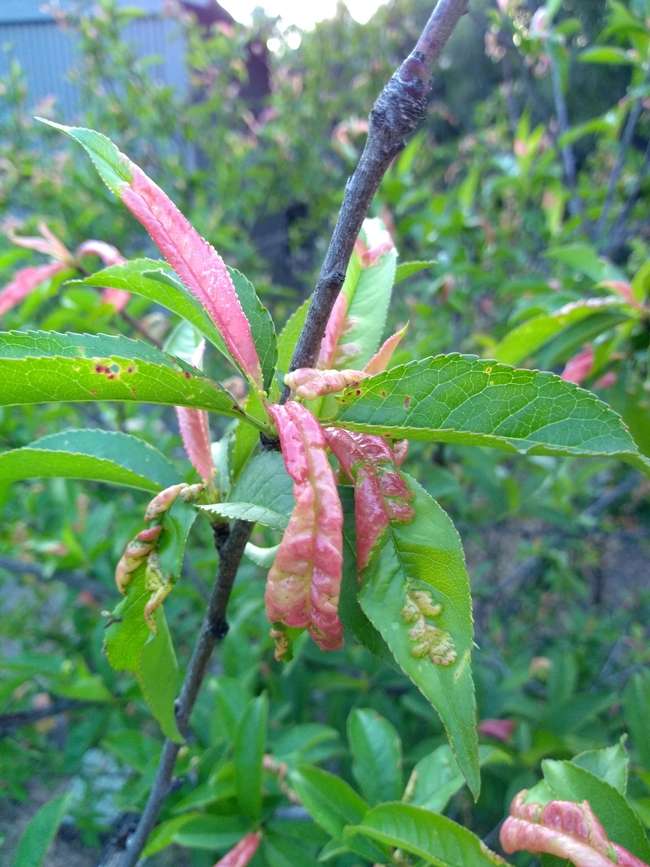In this weekly blog, Dr. Annemiek Schilder, Director, UCCE Ventura County and Hansen Agricultural Research and Extension Center, shares her observations about the natural world across the seasons. As she says:
"Gently observing your surroundings with curiosity will teach you some amazing things. There are so many fascinating things happening under our noses, only wanting for an observant eye."
"What is wrong with my peach tree?"
Many people have probably asked this question as they have stared in concerned wonder at the distorted leaves of their peach trees. From a distance the striking color patterns may even look like peculiar flowers. Peach leaf curl is a disease of peach and nectarine trees caused by the fungus Taphrina deformans, an apt name for this fungus. Ornamental peach trees, grown for their beautiful blooms, are also susceptible to this disease.
Peach leaf curl is a common plant disease featured in many plant pathology textbooks. It may well have been the disease that convinced me to become a plant pathologist (a plant doctor) as I peered with increasing fascination at its structures under the microscope.
Allow me to digress a little to discuss that great invention: the microscope. In the late 1600's, Antonie van Leeuwenhoek, a self-taught Dutch scientist, developed a single lens microscope with up to 300 times magnification, allowing observation of bacteria for the first time. He called them “little animals”. However, it would take another 200 years before bacteria and fungi were officially recognized as causes of disease in animals and plants, laying the groundwork for modern-day medicine.
The name of this disease, peach leaf curl, is quite descriptive as the fungus causes leaves to curl and develop blister-like areas. Rainy, cool springs promote infection - as well as spore production - on infected leaves. Spores are spread by wind and rainsplash to other leaves, where they can cause new infections. The disease is not only unsightly –except to the eyes of a plant pathologist, of course - but also causes diseased leaves to drop prematurely, which weakens the tree and may lower fruit yield. In severe cases, repeated defoliations can kill a tree.

Taphrina deformans spores are produced in elongated structures called asci, a Latin word meaning “sacs”.
Have you noticed that Latin is used a lot for botanical descriptions? This is because Latin is a “dead” language and thus grammatically stable.
Taphrina's asci are lined up in layers on the leaf surface without any protective covering; therefore they are termed “naked asci”. So guess what name my Plant Pathology student volleyball team chose? Indeed, our t-shirts sported botanically correct drawings of Taphrina's asci, causing the other teams to think of us a bunch of weird science nerds. Nerds who played a pretty good game of volleyball mind you!
So what can you do to keep your trees healthy? Here are a few tips.
- If you are thinking of planting a peach or nectarine tree, investigate whether resistant varieties are available so you can avoid the problem altogether.
- For established trees, fall pruning of diseased shoots may help.
- Also for established trees, (organic) copper fungicide sprays in late fall after leaf drop and before budbreak in the spring may help.
- Addition of a horticultural oil may improve spray coverage. Be sure to follow the instructions on the label carefully.
If your tree got whacked by the disease, infected leaves will fall off and new leaves will develop but this requires the tree to expend additional energy. A foliar fertilizer application as well as fruit thinning can help the tree recover.

Related Reading:
